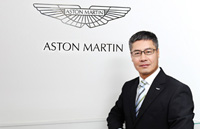Chemical giant Solvay eyeing up nation's sustainable auto sector
By Zhuan Ti (China Daily) Updated: 2015-02-02 15:48Solvay SA, one of the world's largest chemicals groups, plans to deploy more products and resources to support China's automobile market during the next few years. The group hopes this will fuel the industry's robust and ecologically sustainable growth and make transport cleaner, safer and more efficient.
 |
|
Martin Laudenbach, Solvay's Asia Pacific president. |
Currently, China is the largest automotive market in the world in terms of new vehicles being built. The electrical vehicle segment is one of China's seven emerging strategic industries. The country is expected to reach automobile production capacity of 2 million and cumulative sales volume of more than 5 million by 2020.
While carrying out further economic transformation and industrial upgrades, many Chinese cities and automotive enterprises are eager to seek solutions and tackle problems such as air pollution and energy consumption caused by heavy automobile use.
"With China seeking 'smart' growth in the coming years, sustainable mobility is all the more important in the vast and highly populated country, where economic growth has led to significant expansion of transport and infrastructure, as well as many environmental issues," said Martin Laudenbach, Solvay's Asia Pacific president, who has more than 20 years experience in the chemical industry.
Solvay invested heavily in both its manufacturing and innovation facilities in China in the past three decades and said it will continue to invest in clean transport in the next few years.
The group shifted its market focus to high-tech new material research and development, for sustainable 'greener' automobiles. This includes materials such as silica, engineering plastics, emerging bio-chemicals, coating materials and special chemicals.
The Belgian company plans to focus on four priorities, new materials for lightweight vehicles, electrification, powertrain efficiency and green technology, to expand its automotive market presence in China.
Lightweight materials, particularly engineered polymers, can reduce the weight of a vehicle's structural and semi-structural parts or mechanical components to lower energy consumption.
Electrification solutions such as lithium salts have outstanding electrochemical properties and high stability, which extend the life and increase performance of batteries in electric vehicles.
- Sales of new-energy vehicles expected to surge this year
- Dongfeng-Volvo joint venture opening doors for both sides
- Audi looks to drive ahead in challenging Chinese market
- Cyclical growth dip expected for light vehicles in 2015
- New arrival Karry K50
- China wants Mexico to protect rights of Chinese firms
- Prices of new homes hit an upward track in China
- Chinese rating agency gives Gazprom AAA

















